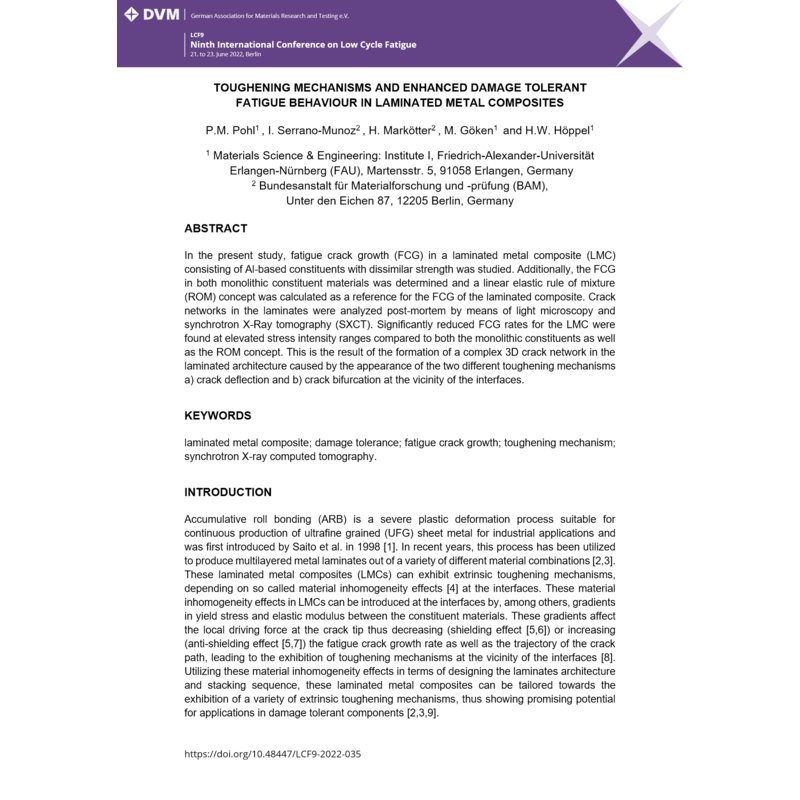- Nur online erhältlich



In the present study, fatigue crack growth (FCG) in a laminated metal composite (LMC) consisting of Al-based constituents with dissimilar strength was studied. Additionally, the FCG in both monolithic constituent materials was determined and a linear elastic rule of mixture (ROM) concept was calculated as a reference for the FCG of the laminated composite. Crack networks in the laminates were analyzed post-mortem by means of light microscopy and synchrotron X-Ray tomography (SXCT). Significantly reduced FCG rates for the LMC were found at elevated stress intensity ranges compared to both the monolithic constituents as well as the ROM concept. …

Datenschutzbedingungen (bearbeiten im Modul "Kundenvorteile")

Lieferbedingungen (bearbeiten im Modul "Kundenvorteile")

Rücksendebedingungen (bearbeiten im Modul "Kundenvorteile")
In the present study, fatigue crack growth (FCG) in a laminated metal composite (LMC) consisting of Al-based constituents with dissimilar strength was studied. Additionally, the FCG in both monolithic constituent materials was determined and a linear elastic rule of mixture (ROM) concept was calculated as a reference for the FCG of the laminated composite. Crack networks in the laminates were analyzed post-mortem by means of light microscopy and synchrotron X-Ray tomography (SXCT). Significantly reduced FCG rates for the LMC were found at elevated stress intensity ranges compared to both the monolithic constituents as well as the ROM concept. This is the result of the formation of a complex 3D crack network in the laminated architecture caused by the appearance of the two different toughening mechanisms a) crack deflection and b) crack bifurcation at the vicinity of the interfaces.